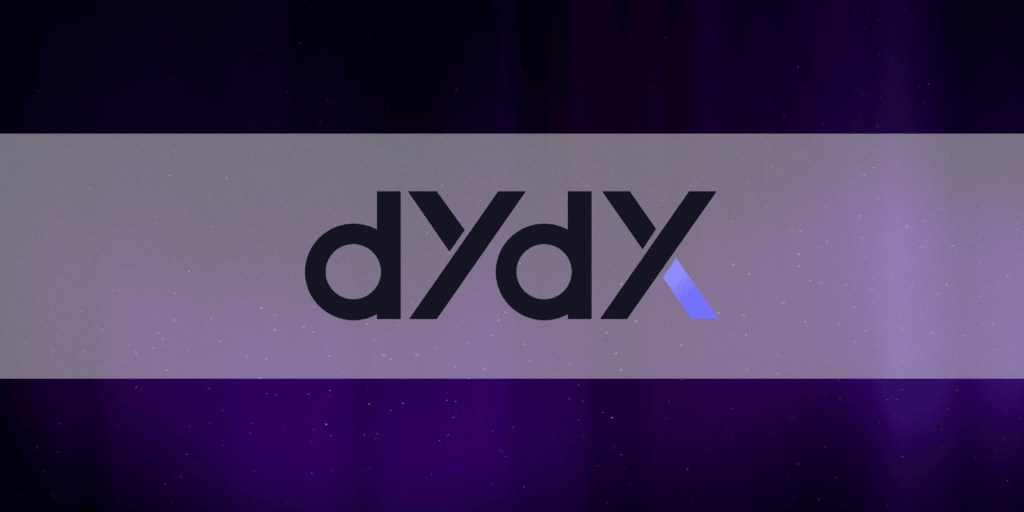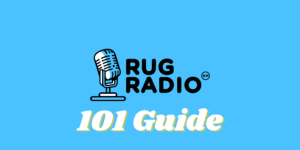- History of dYdX
- Spot Margin and Trading (Legacy)
- dYdX V4
- dYdX Trading & User Interface
- dYdX Hedgies
- DYDX Token
- dYdX Foundation
- dYdX Governance
- Final Thoughts: dYdX and Its Future
dYdX is a decentralized exchange (DEX) designed for trading crypto derivatives, founded in 2017 by Antonio Juliano, a former Coinbase software engineer.
Today, dYdX is one of the largest DEXs for high-level trading with over $400 million in total value locked (TVL) and trading volumes reaching the billion-dollar roof daily. It’s available in nine languages, including English, Portuguese, Japanese, French, Spanish and Turkish.
In addition to being a derivatives trading platform, dYdX offers:
- Perpetuals trading and cross-margin with up to 20x leverage
- Over 30 supported pairs including BTC/USD, ETH/USD, LINK/USD, AAVE/USD
- NFT trading on the exchange’s Hedgies marketplace
- A testnet for projects seeking to build using the DEX’s development tools
- An academy with thorough educational content about derivatives trading and the ecosystem in general
History of dYdX
The DEX was founded by Antonio Juliano, and officially launched in July 2017. The company is based in San Francisco, California, and has a small team of around 40 employees, according to Crunchbase.
Perpetuals are financial contracts that an investor can buy at a predetermined price. But unlike traditional futures contracts, they don’t have an expiry date, so there’s no final settlement for the trade and the investor can go as long as they want in their positions.
Not many DeFi platforms offer these and other types of complex financial instruments. Further, most DEXs today emulate the same features and mechanisms from CEXs (centralized exchanges), like spot trading, asset swap, automated market makers (AMMs) instead of order books, etc. But the derivatives market has been largely overlooked by the DeFi industry.
Only a few DEXs offer derivatives trading besides dYdX, like GMX and Gains Network.
dYdX takes a different approach– it mixes decentralized infrastructure with centralized counterparts, while also offering NFT trading, and a Goerli testnet with developer tools to test the DEX’s core products and build trading strategies.
Spot Margin and Trading (Legacy)
dYdX offered spot and margin trading on its layer-1 UI (Ethereum), but the service was shut down in November 2021 as most of the money flow was concentrated on the derivatives side of the exchange. The DEX soon faced some of Ethereum’s old problems: high fees and network congestion, which led it to move to StarkWare, a layer-2 scaling solution that uses Zero-Knowledge rollups built on top of Ethereum.
However, as part of the V4 upgrade, dYdX will move in early 2023 to Cosmos, a decentralized network composed of independent and interoperable blockchain protocols.
dYdX V4
The V4 upgrade is set to release in Q2 2023 and seeks to bring multiple features and benefits for users, such as creating SubDAOs, which will allow the community to better manage internal operations.
The migration to Cosmos will allow the protocol to create a proper layer-1 for itself, called dYdX Chain. This will also enable validators to run an off-chain orderbook, which, according to the proposal, will increase throughput with orders being matched by the network in real time and trades occurring on-chain in each block.
dYdX Trading & User Interface
Below is dYdX’s main trading interface. As you can see, it offers a wide range of trading features, like stop loss and limit orders, indicators, and analytic tools to trade crypto derivatives with leverage.

But the main perk is that you don’t need to sign up with your credentials —just connect your Web 3 wallet, like MetaMask, TrustWallet, or Coinbase Wallet. You can also deposit with fiat via Banxa, a Canadian fiat-to-crypto payment gateway solution.
What you might notice is the order book, which is atypical for a decentralized exchange. dYdX decided to go with an order book since it was an already established model for liquidity and is less capital-intensive compared to AMMs, according to the team. The liquidity for perpetuals comes from the exchange itself, and uses “cryptographically-signed off-chain messages to establish an orderbook.”
The team said spot and margin trading, together with lending and borrowing, are expected to be resumed once it moves to Cosmos.
dYdX’s lending system was simple and pretty much the same as other platforms; lenders on dYdX earned interest rates based on supply and demand, while borrowers could ask for loans by pledging low collateral.
Other dYdX features include:
- Documentation: allows users to trade using the exchange’s APIs (Application Programming Interface), and check out and test developer tools and private and public HTTP APIs as well
- GitHub: allows users to review the exchange’s smart contracts, python and Typescript clients for developers, which allow programmatic use of dYdX, and more
- Status: monitor the DEX’s status in real-time, such as uptime over the past 90 days and past incidents
- dYdX Academy: to help spread education on dYdX and the ecosystem, such as how to set up an account, establish stop market and stop limit, how to trade cross margin, isolated margin, etc.
dYdX Hedgies
Hedgies is an NFT collection of 4,200 of mammals minted on the Ethereum blockchain and were distributed to the dYdX community, and are up for bids on secondary marketplace OpenSea.

DYDX Token
The DYDX token was launched in August 2021 alongside a $100k airdrop for users with the highest trading volumes.
The token is used to:
- Reward traders on the layer-2 (utility will remain the same once it moves to Cosmos), which will depend on users’ trading activity, and those with over 10,000 DYDX enjoy a 15% trading fee discount
- Staking to earn rewards in the Liquidity Pool and Safety Pool (APY depends on market conditions)
The token is inflationary, having a fixed inflation rate of 2% per year. It has a max supply of 1 billion DYDX which will be distributed over the next five years to:
- 50% to the community, including traders, stakeholders, liquidity providers, etc
- 15% to dYdX founders, contributors, members, and overall team.
- 10% to reserve for future employees.
- 25% to previous active users who completed certain milestones
As of December 2022, only 7% of the supply is in circulation.
dYdX Foundation
In August 2021, The team announced the launch of the dYdX Foundation, an independent organization based in Zug, Switzerland, that supports the growth and further development of the DEX.
The foundation oversees and finances projects building on dYdX, research, and development activities, and also pushes for educational content for the public about the protocol and the overall ecosystem. The foundation is also in charge of forming partnerships, engaging with various businesses, talking to regulators —and any third party that could benefit the ecosystem.
So far, dYdX has achieved massive support from various hedge funds and institutions, including Andreessen Horowitz, Paradigm, Polychain, Dragonfly Capital, and investors such as Brian Armstrong, Fred Ehrsam, and Naval Ravikant. In mid-2021, the DEX raised over $80 million in at least 4 funding rounds.
dYdX Governance
The protocol is governed by DYDX holders and delegates. There are two types of governance powers:
- Proposing power: allows users to create proposals
- Voting power: allows users to vote for or against a proposal
Users will have governance power depending on the amount of DYDX they have staked or have tokens delegated.
Similar to many other DeFi protocols, all proposals on dYdX must go through a dYdX Improvement Proposal (DIPs).

Flow chart of DIPs. Source: dYdX community
Final Thoughts: dYdX and Its Future
What dYdX brings value to the DeFi community with an exchange that’s much more than just swapping crypto and yield farming. It brings two of the best worlds by mixing certain features of centralized platforms, like an order book, with a decentralized infrastructure governed by its community.
dYdX’s 2022 roadmap brought multiple features for the exchange, including increased IMF for multiple blockchain ecosystems, a new UI with new swapping features, fiat on-ramp with a credit card and bank transfer, and much more. That’s to say, eyes open for what the DEX does in 2023.
Never Miss Another Opportunity! Get hand selected news & info from our Crypto Experts so you can make educated, informed decisions that directly affect your crypto profits. Subscribe to CoinCentral free newsletter now.










